Good morning. How much industrial demand is there for oil-free compressed air?
Good morning. Over the past decade, we have seen a growing market worldwide for oil-free compressed air. Applications are getting more sensitive to contaminants like hydrocarbons – which are very difficult to remove.
Production and quality engineers in industries like the food & beverage, pharmaceutical, semiconductor, and chemical sectors have established internal specifications for oil-free compressed air. The product spoilage and safety issues at risk make oil-free compressed air an absolute necessity in certain processes.
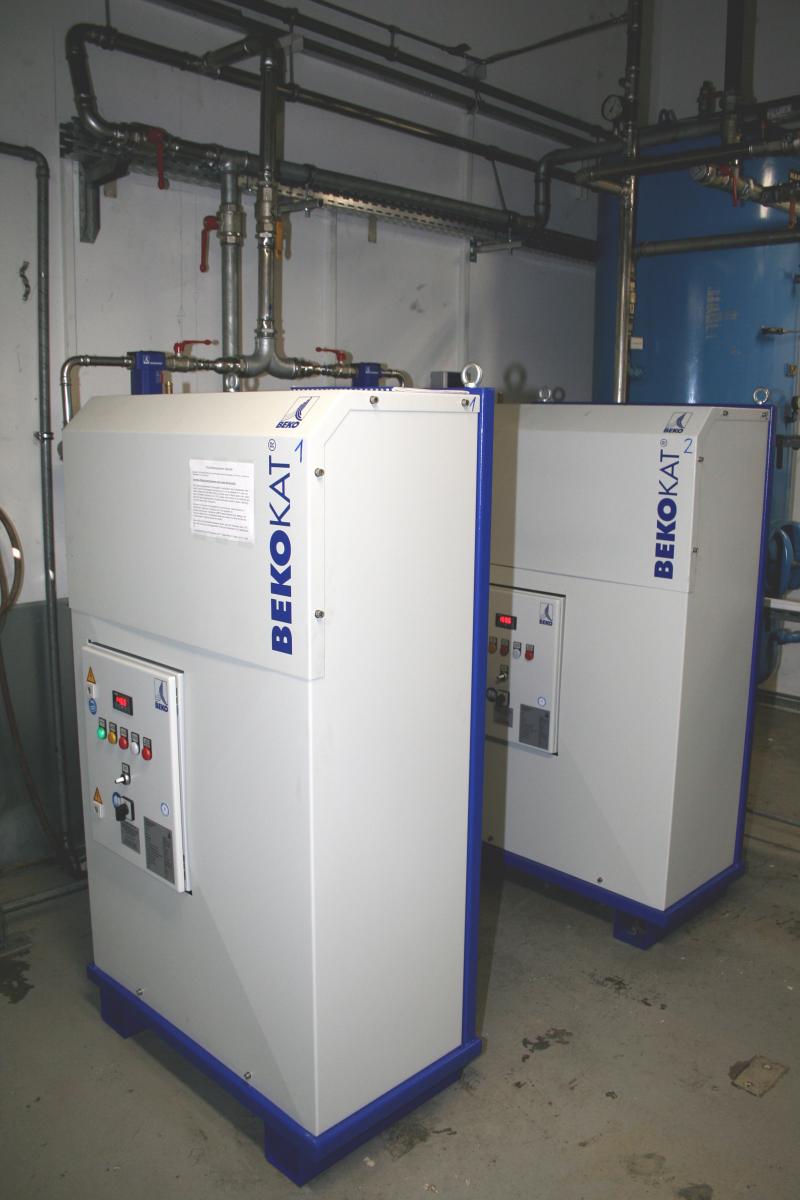 |
|||
The BEKOKAT® system uses a catalytic converter to ensure hydrocarbon removal. |
Please describe the BEKOKAT® hydrocarbon removal system.
The BEKOKAT® system transforms hydrocarbons, through total oxidation, to produce carbon dioxide and water. The heart of the system is the catalytic converter, a pressure-vessel filled with a catalytic granulate capable of “cracking” hydrocarbons. The converter is heated to an operating temperature of 302 °F. Oil-contaminated compressed air flows into the pores of the catalytic granulate surface. A chemical reaction occurs and the oil molecule chains are split up. The only remaining by-products are water and carbon dioxide.
The catalytic converter ensures and guarantees the removal of all liquid oils and gaseous hydrocarbons as well as all bacterias and viruses from the compressed air stream. Compressed air quality can be classified as sterile and meeting Class ZERO air quality standards in ISO 8573.1:2001 with regards to oil and oil vapor and certified from an independent institute - the TUV.

How much maintenance is required to maintain oil-free air performance?
That is an important question. Traditionally, activated carbon filters and towers (carbon absorbers) have been used to remove hydrocarbons. BEKO also offers these technologies. While they do remove hydrocarbons, they are very dependent upon timely and frequent maintenance to maintain performance levels. Filters, using impregnated charcoal in the element, typically recommend replacement every 300 hours at 30 °C. A carbon tower is dramatically better with a maintenance interval of 5,000 hours at 30 °C. In comparison, the BEKOKAT® system has a recommended maintenance interval of 25,000 hours. Our critical-process customers value the fact that this system virtually eliminates timely maintenance as a factor to be managed in order to ensure oil-free compressed air.
Do systems with oil-free air compressors use BEKOKAT® systems?
Treating the compressed air, regardless of the air compressor technology, is the only way to ensure oil-free compressed air. Many BEKOKAT® systems are sold into installations using oil-free air compressors. The reason is that these are the customers who place the highest value on 100% oil-free compressed air – at all times.
We all know that oil-free air compressors are vulnerable to the quality of ambient air conditions. Airborne hydrocarbons, in the 6-10 ppm range, are normal and these can go up to 16-24 ppm in an atmosphere exposed to vehicle exhaust or in an contaminated environment like for example an airport. In many cases, up to 30% of these hydrocarbons may be condensable. Manufacturing processes may also create hydrocarbon releases to atmosphere, which are then ingested by the oil-free air compressor.
Do systems with lubricated air compressors use the system?
Many factories install oil-free air compressors for 100% of their compressed air needs when in reality- only 40% of the compressed air needs to be truly oil-free. Engineers are recognizing this as an opportunity to reduce capital expenditures.
If 700 scfm out of 2,500 scfm needs to be oil-free, the BEKOKAT® system is installed at the point of use. This allows the facility to invest significantly less capital in air compressors than if they went with oil-free for the whole facility.
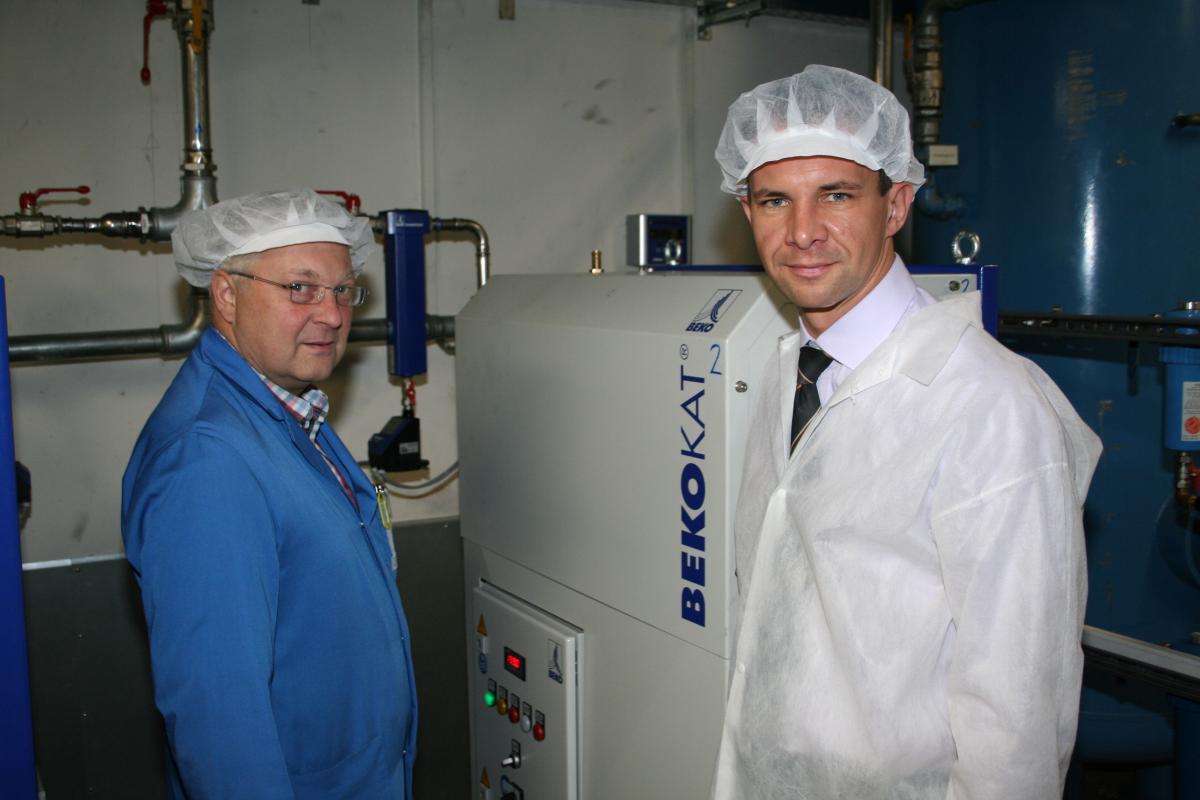
The BEKOKAT® system is commonly used in the food, semiconductor, and pharmaceutical industries.
How are hydrocarbon levels measured by the system?
This is a key question and part of the big step forward that BEKO now provides to compressed air users. Up until now, end users have not had a way of knowing what the hydrocarbon content was in their compressed air system. They had filters with alarm functions based upon time – but little more. They could send samples off to laboratories and wait to hear the results – while production continued. This was also not very satisfactory.
This situation led our company to develop the METPOINT® OCV hydrocarbon monitoring system. This innovative instrument is designed specifically for compressed air systems wanting real-time measurement and monitoring of hydrocarbons in their compressed air system.
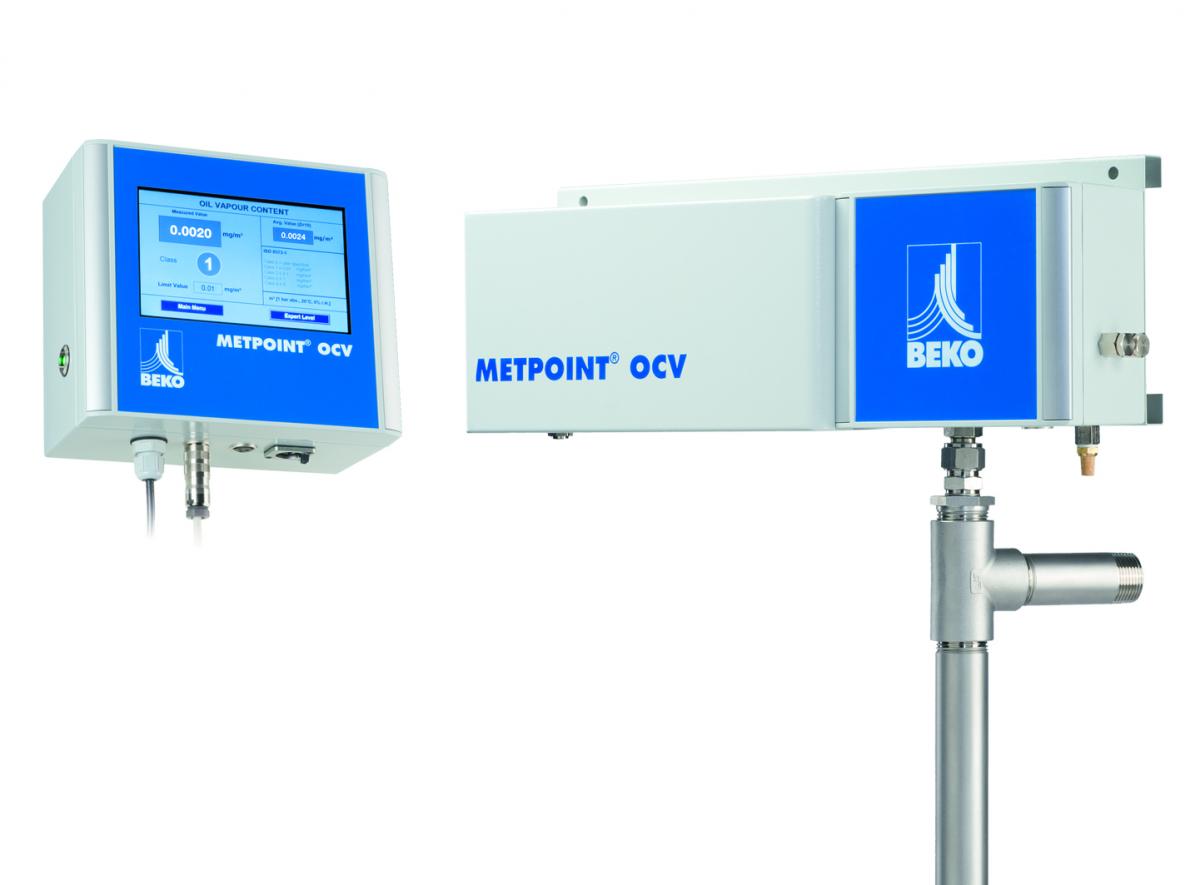
The METPOINT® OCV Display and Measuring Cell
Please describe the METPOINT® OCV hydrocarbon monitoring system.
A sample is taken from the compressed air line and supplied to the measuring cell. The measuring cell consists of the reference air generator and the actual measuring cell with PID sensor. The reference air generator is actually a “mini-BEKOKAT producing a 100% pure and oil-free gas sample. The zero reference and the compressed air sample to be measured are supplied in turns to the measuring cell are then compared to one another. In the measuring cell, the hydrocarbon vapor portion is measured via a photo ionization detector (PID). The resulting electrical signal is amplified and evaluated.
For those unfamiliar with PID sensors, the general operating principle works like this. Through the exposure to UV light, the gas molecules are ionized and accumulate on the electrodes. This results in a signal which is evaluated subsequent to amplification.
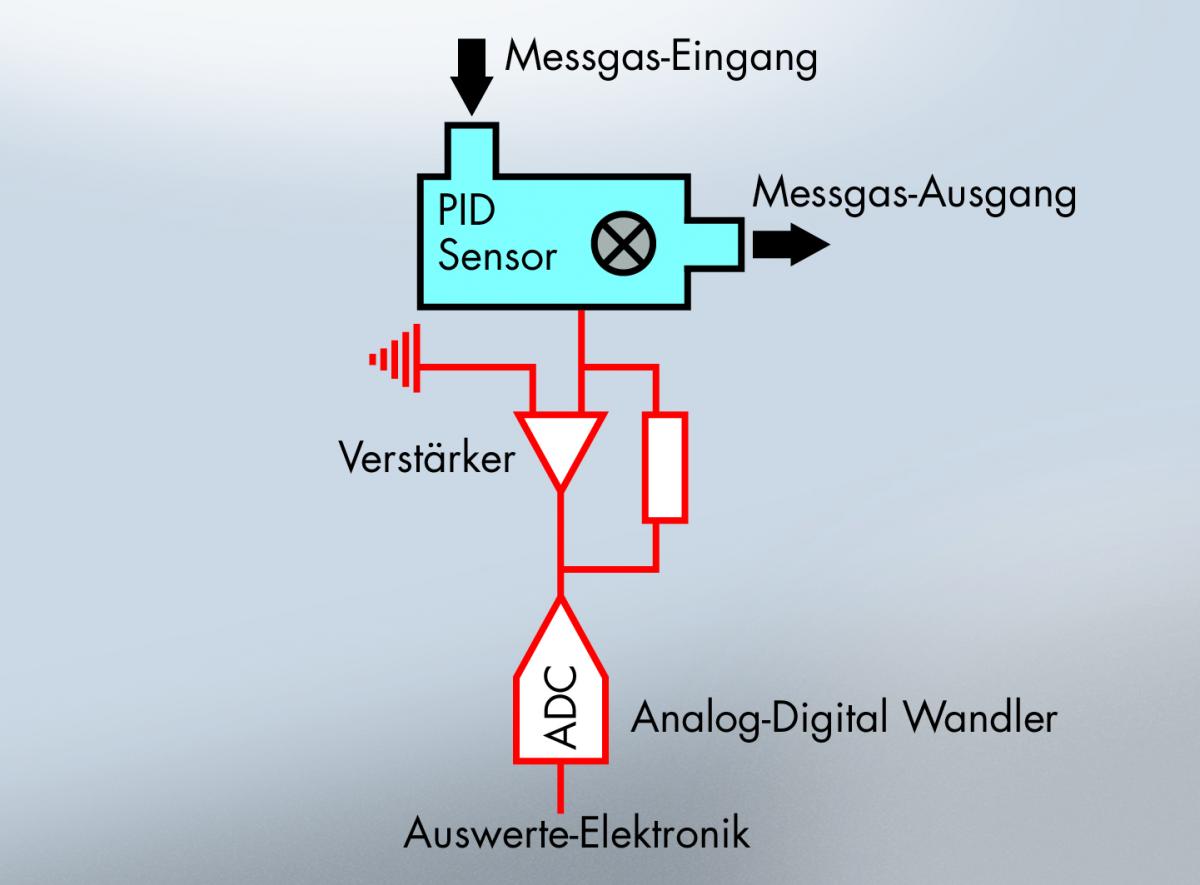
The METPOINT® Photo Ionization Detector Sensor System
What are the monitoring and communication capabilities?
The METPOINT® OCV has a touch-screen multifunctional display using sophisticated software that interprets and communicates the results coming from the PID measuring cell. A unique feature is its ability to “auto-calibrate”. This protects the measurement integrity of the system. Alarm functions exist at user-programmable hydrocarbon levels to protect the customer’s applications. The unit has a data logger and connecting cables and Ethernet interfaces to send real-time hydrocarbon measurements to remote monitoring locations.
Many pharmaceutical firms do a high level of testing of their compressed air quality. They take samples, on a regular interval, and send it out to external laboratories. Turn-around time is usually 48 hours before they get their results back.
Our in-line and real-time measurement automates the process and provides instantaneous feedback to the customer. There is no waiting on the lab results while production continues.

The METPOINT® OCV System installed in a pharmaceutical plant.
What level of hydrocarbon measurement can be obtained?
The measurement level of hydrocarbon goes down to 0.0001 mg/m3 and thus is in the Class Zero range of ISO 8571.1:2001. The unit received the prestigious TUV Certificate certifying that the METPOINT® OCV meets the requirements for the measurement of oil vapor and hydrocarbons in accordance with ISO 8573.1.
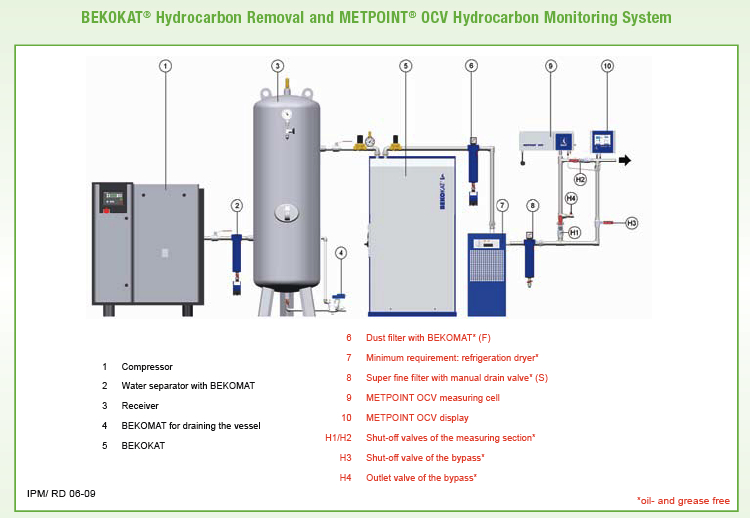
Thank you for your insights.
For more information, please contact Tilo Fruth, Beko Technologies, www.bekousa.com.




